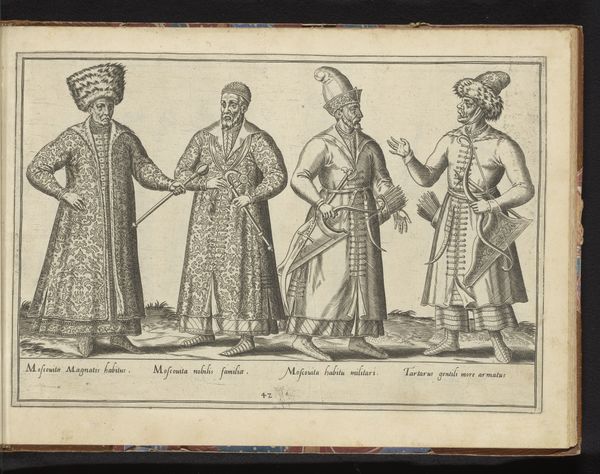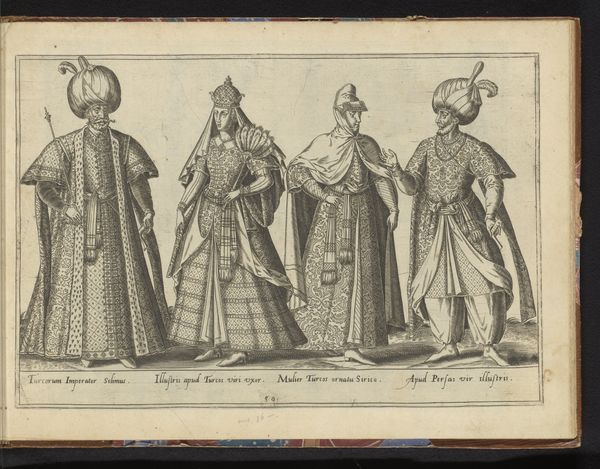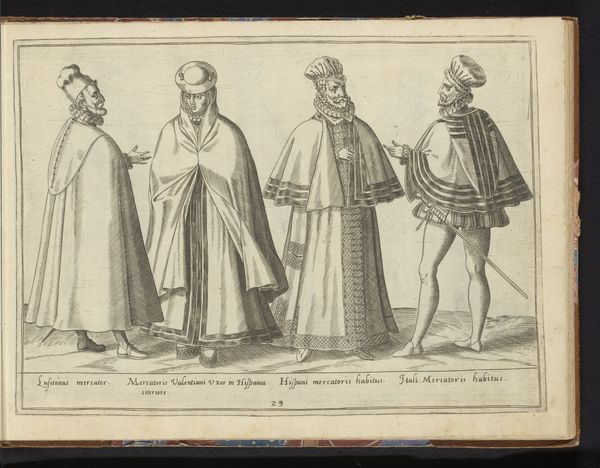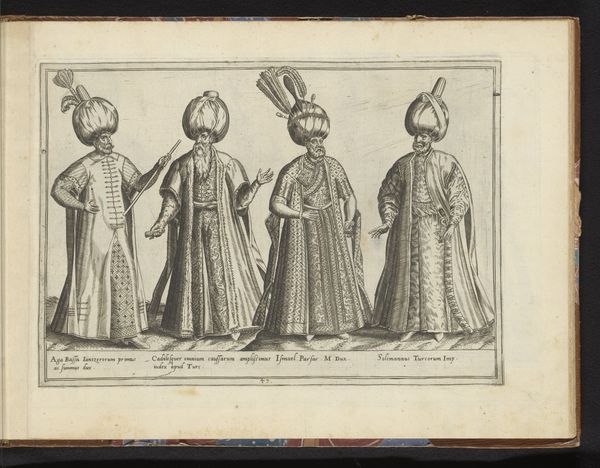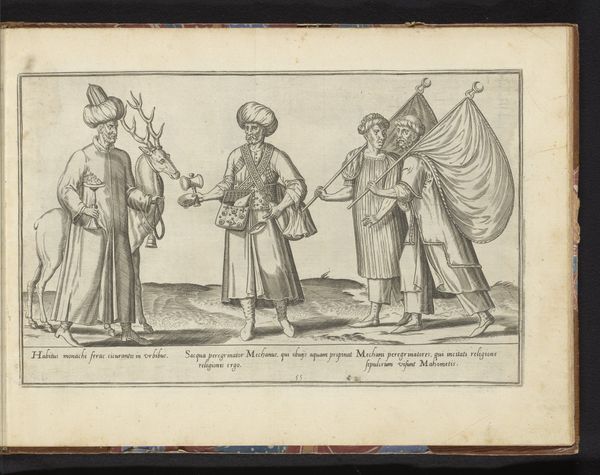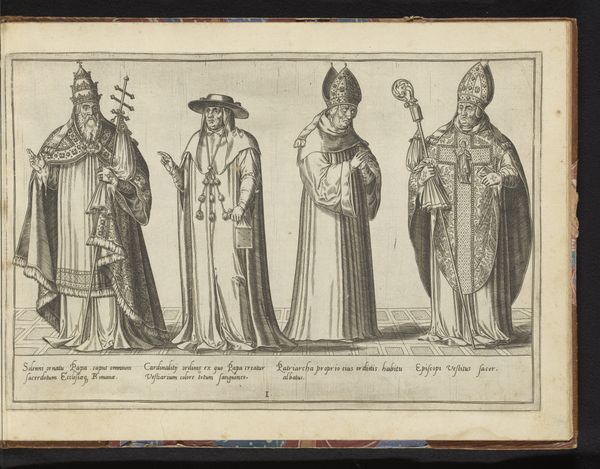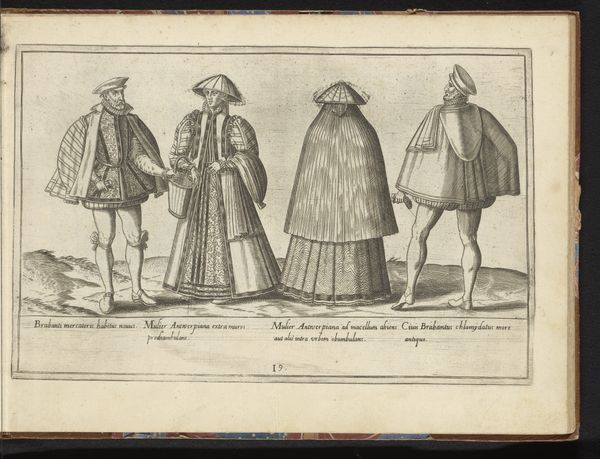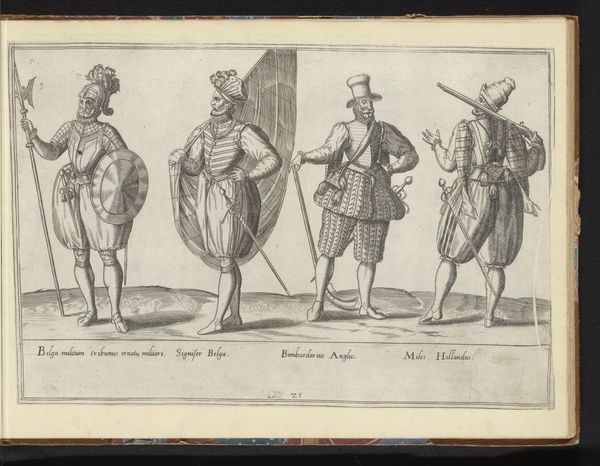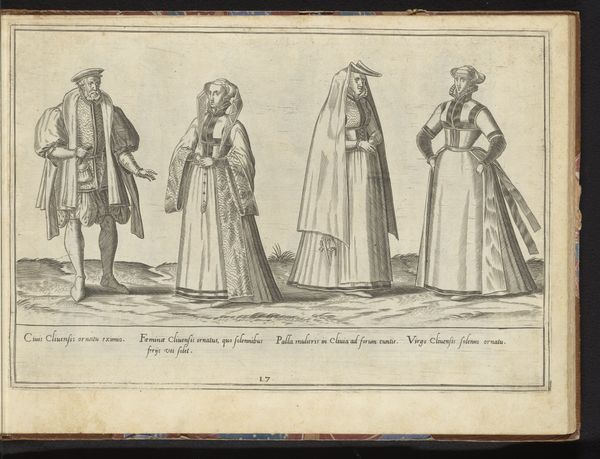
Vier Turkse mannen, gekleed volgens de mode van ca. 1580 before 1581
0:00
0:00
print, engraving
#
portrait
# print
#
genre-painting
#
northern-renaissance
#
engraving
Dimensions: height 265 mm, width 360 mm
Copyright: Rijks Museum: Open Domain
Abraham de Bruyn created this engraving, titled "Four Turkish Men, Dressed According to the Fashion of ca. 1580," without a specified date. It's now held at the Rijksmuseum. The image presents us with visual codes that speak volumes about cultural exchange in the late 16th century. The costumes indicate the sitters' status and origin, but also suggest the fascination of Europeans with the wider world. The text beneath the figures details their roles as Ragusa official, Pegu merchant, Jewish merchant and Armenian merchant. Made in the Netherlands, the engraving reflects a society deeply involved in trade and exploration. It comments on the social structures of its time by illustrating the dress codes of foreign merchants, highlighting both their integration into and distinction from European society. To truly understand this work, we must consider its place within the broader context of European expansion and the development of global trade networks. This requires looking at historical sources and institutional archives to unpack the complex relationship between art, commerce, and cultural identity.
Comments
No comments
Be the first to comment and join the conversation on the ultimate creative platform.
